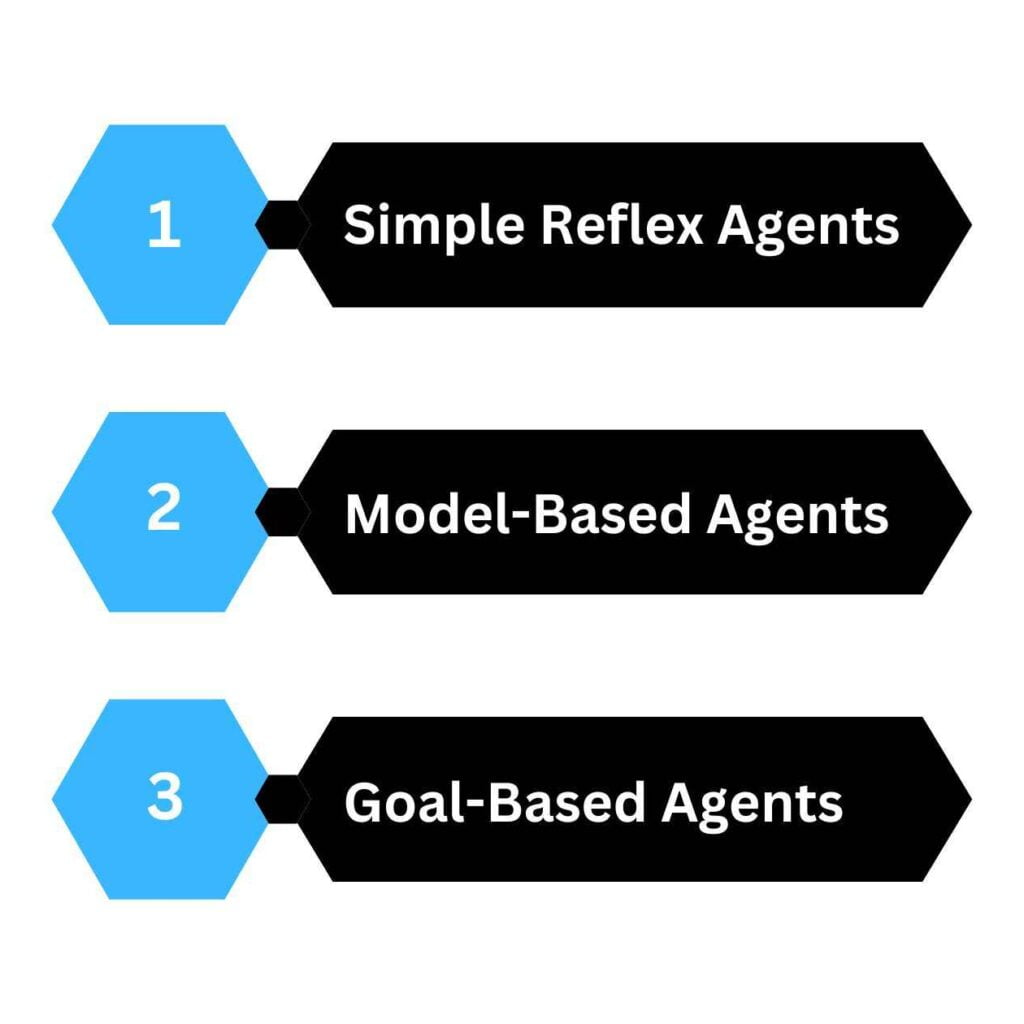Have you ever wondered how artificial intelligence systems are able to solve complex problems? Problem solving agents play a key role in AI, using algorithms and strategies to find solutions to a variety of challenges.
Problem-solving agents in artificial intelligence are a type of agent that are designed to solve complex problems in their environment. They are a core concept in AI and are used in everything from games like chess to self-driving cars.
In this blog, we will explore problem solving agents in artificial intelligence, types of problem solving agents in AI, real-world applications, and many more.
Table of Contents
- What is Problem Solving Agents in Artificial Intelligence?
- Types of Problem Solving Agents in AI
- Components of a Problem Solving Agent in AI
- Real-world Applications of Problem Solving Agents in AI
- Conclusion
What is Problem Solving Agents in Artificial Intelligence?

A Problem-Solving Agent is a special computer program in Artificial Intelligence. It can perceive the world around it through sensors. Sensors help it gather information.
The agent processes this information using its knowledge base. A knowledge base is like the agent’s brain. It stores facts and rules. Using its knowledge, the agent can reason about the best actions. It can then take those actions to achieve goals.
In simple words, a Problem-Solving Agent observes its environment. It understands the situation. Then it figures out how to solve problems or finish tasks.
These agents use smart algorithms. The algorithms allow them to think and act like humans. Problem-solving agents are very important in AI. They help tackle complex challenges efficiently.
Types of Problem Solving Agents in AI

There are different types of Problem Solving Agents in AI. Each type works in its own way. Below are the different types of problem solving agents in AI:
Type 1: Simple Reflex Agents
Simple Reflex Agents are the most basic kind. They simply react to the current situation they perceive. They don’t consider the past or future.
For example, a room thermostat is a Simple Reflex Agent. It turns the heat on or off based only on the current room temperature.
Type 2: Model-Based Agents
Model-based agents are more advanced. They create an internal model of their environment. This model helps them track how the world changes over time.
Using this model, they can plan ahead for future situations. Self-driving cars use Model-Based Agents to predict how traffic will flow.
Type 3: Goal-Based Agents
Goal-based agents are the most sophisticated type. They can set their own goals and figure out sequences of actions to achieve those goals.
These agents constantly update their knowledge as they pursue their goals. Virtual assistants like Siri or Alexa are examples of Goal-Based Agents assisting us with various tasks.
Each type has its own strengths based on the problem they need to solve. Simple problems may just need Reflex Agents, while complex challenges require more advanced Model-Based or Goal-Based Agents.
Components of a Problem Solving Agent in AI

A Problem Solving Agent has several key components that work together. Let’s break them down:
1. Sensors
Sensors are like the agent’s eyes and ears. They collect information from the environment around the agent. For example, a robot’s camera and motion sensors act as sensors.
2. Knowledge Base
The Knowledge Base stores all the facts, rules, and information the agent knows. It’s like the agent’s brain full of knowledge. This knowledge helps the agent understand its environment and make decisions.
3. Reasoning Engine
The Reasoning Engine is the thinking part of the agent. It processes the information from sensors using the knowledge base. The reasoning engine then figures out the best action to take based on the current situation.
4. Actuators
Finally, Actuators are like the agent’s hands and limbs. They carry out the actions decided by the reasoning engine. For a robot, wheels and robotic arms would be its actuators.
All these components work seamlessly together. Sensors gather data, the knowledge base provides context, the reasoning engine makes a plan, and actuators implement that plan in the real world.
Real-world Applications of Problem Solving Agents in AI
Problem Solving Agents are not just theoretical concepts. They are actively used in many real-world applications today. Let’s look at some examples:
Gaming Agents
Problem solving agents are widely used in gaming applications. They can analyze the current game state, consider possible future moves, and make the optimal play. This allows them to beat human players in complex games like chess or go.
Robotics
Robots in factories and warehouses heavily rely on problem solving agents. These agents perceive the environment around the robot using sensors. They then plan efficient paths and control the robot’s movements and actions accordingly.
Virtual Assistants
Smart home devices like Alexa or Google Home use goal-based problem solving agents. They can understand your requests, look up relevant information from their knowledge base, and provide useful responses to assist you.
Recommendation Systems
Online retailers suggest products you may like based on recommendations from problem solving agents. These agents analyze your past purchases and preferences to make personalized product suggestions.
Scheduling and Planning
Scheduling apps help plan your day efficiently using problem solving techniques. The agents consider your appointments, priorities, and travel time to optimize your daily schedule.
Self-Driving Cars One of the most advanced applications is self-driving cars. Their problem solving agents continuously monitor surroundings, predict the movements of other vehicles and objects, and navigate roads safely without human intervention.
Conclusion
In conclusion, Problem solving agents are at the heart of artificial intelligence, mimicking human-like reasoning and decision-making. From gaming to robotics, virtual assistants to self-driving cars, these intelligent agents are already transforming our world. As researchers continue pushing the boundaries, problem solving agents will become even more advanced and ubiquitous in the future. Exciting times lie ahead as we unlock the full potential of this remarkable technology.


3 thoughts on “Understanding Problem Solving Agents in Artificial Intelligence”